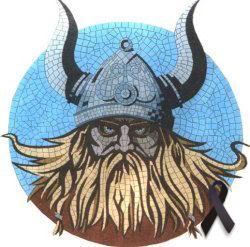
Posted on 04/04/2010 5:06:16 PM PDT by jay1949
In 1875, writer Edward King published a travel memoir, "The Great South: A Record of Journeys in Louisiana, Texas, the Indian Territory, Missouri, Arkansas, Mississippi, Alabama, Georgia, Florida, South Carolina, North Carolina, Kentucky, Tennessee, Virginia, West Virginia, and Maryland." The book contained numerous illustrations by James Wells Champney, including drawings of log cabins of Backcountry folk. [Vintage illustrations]
(Excerpt) Read more at backcountrynotes.com ...
Mountain Folk and Log Cabins Ping List
.....a poor mountaineer, barely kept his family fed...
Please add me to your ping list!
Also, have you heard this song?
http://www.cowboylyrics.com/tabs/sparks-larry/tennessee-1949-12080.html
Some friends and I hiked the Tetons several years back, on Death Shelf trail, some of the most beautiful scenery of the mountains and valleys, and along the trail remember an old solitary cabin, just about gone, but in a perfect spot. At one time, somebody had the whole place to hisself and family, must have been something.
Thanks for the post and info - knowing our roots is going to become increasingly important and relevant to survival in the coming months! IMHO

ping, I love this sort of stuff!
Jay, would you please put me on your ping list? Americana!! I hunger for it these days.
I’ll keep that in mind to visit. One of these days I’ll travel to the south and south-eastern states, rent a car and travel around the country side and small towns.
If you have any other suggestions, let me know!
Now let me tell the story, I can tell it all
About the mountain boy who ran illegal alcohol
His daddy made the whiskey, son, he drove the load
When his engine roared,
They called the highway thunder road.
Sometimes into ashville, sometimes memphis town
The revenoors chased him but they couldn't run him
Down
Each time they thought they had him,
His engine would explode
He'd go by like they were standin’ still on thunder
Road.
[Chorus]
And there was thunder, thunder over thunder road
Thunder was his engine, and white lightning was his
Load
There was moonshine, moonshine to quench the devil's thirst
The law they swore they'd get him, but the devil got
Him first.
On the first of april, nineteen fifty-four
A federal man sent word he'd better make his run no
More
He said two hundred agents were coverin’ the state
Whichever road he tried to take, they'd get him sure as
Fate.
Son, his daddy told him, make this run your last
Your tank is filled with hundred-proof,
You're all tuned up and gassed
Now, don't take any chances, if you can't get through
I'd rather have you back again than all that mountain
Dew
[Chorus]
Roarin’ out of harlan, revving’ up his mill
He shot the gap at cumberland,
And screamed by maynordsville
With g-men on his taillights, roadblocks up ahead
The mountain boy took roads that even angels feared
To tread.
Blazing’ right through knoxville, out on kingston pike
Then right outside of Beardon, there they made the fatal
Strike
He left the road at ninety, that's all there is to say
The devil got the moonshine and the mountain boy
That day
I have been there. In one cabin, you could still smell the smoke near the fireplace. What stories these cabins could tell!
in case you hadn’t seen it — cade’s cove piece:
Exactly!
Working with an archaeological crew in western Virginia, we pried the clapboards off a house scheduled for demolition and found 24”+ square cut (actually rectangular) logs, dovetailed together formed the original structure. IIRC, the structure was saved. There haven’t been logs like that around there for 150 years or so, at least.
That may be an accurate description of a “dogtrot” in some instances, but it actually is an historic building style brought over by German speaking people in the colonial era, known in this part of North Carolina as a “German double pen.” The form was used for both barns and houses. Of those used as houses, they eventually came to be two stories in the case of more prosperous owners, and the open area between, the “dogtrot,” was enclosed, becoming an entry hall. Some remaining in existence have porches on both stories.
A third log structure was built in proximity to the main structure for use as a kitchen; the very real threat of fire meant it needed to be at something of a remove. But, rain, cold, etcetera, combined with improved stoves and means of containing the threat of fire led to this separate kitchen being attached to the main house, first by another “dogtrot” or breezeway, then being enclosed. All of this eventually morphed into the classic center hall colonial.
My fourth great grandfather served in the Revolution, and returned home to NC to marry his bride, he being of English descent, but his wife to be being of German descent. Her father was prosperous by the standards of the time, and gave them two hundred acres and a fine, two story, German double pen house, constructed of chestnut logs, close to three feet in diameter. This house, first occupied in 1781, stood and was continually occupied until 1980, when it burned due to a lightning strike. It was quite a loss, being literally irreplaceable.
On the Ping list Please!
Disclaimer: Opinions posted on Free Republic are those of the individual posters and do not necessarily represent the opinion of Free Republic or its management. All materials posted herein are protected by copyright law and the exemption for fair use of copyrighted works.